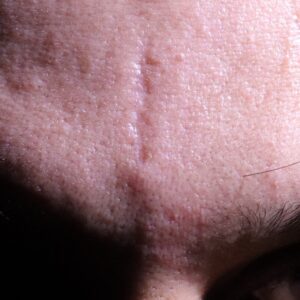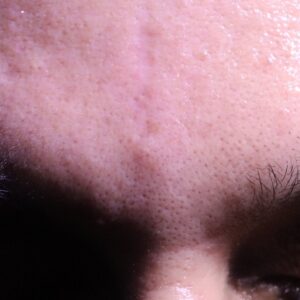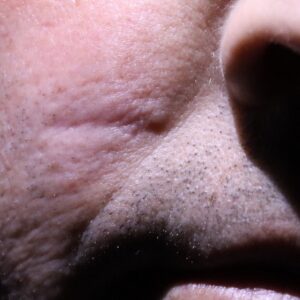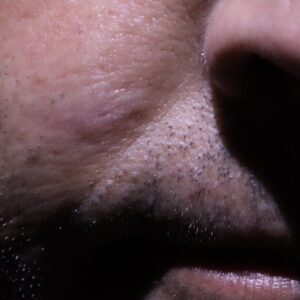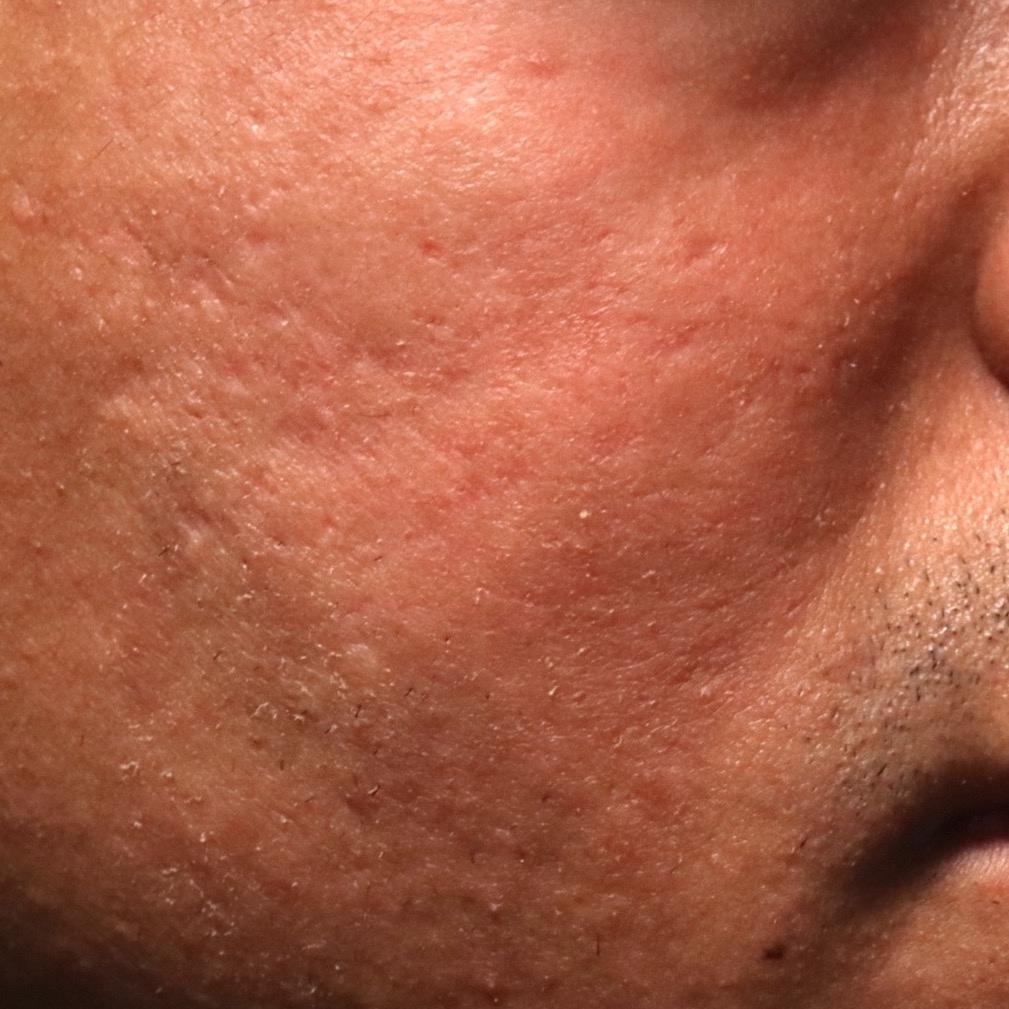Subcision is a precise and effective technique for treating depressed and rolling acne scars, as well as non-acne scars. Unlike microneedling or laser treatments, which focus on resurfacing the skin, subcision works by releasing the fibrous bands beneath the skin that cause scars to appear sunken. This method directly targets the root cause of the scar’s indentation, resulting in a smoother, more even skin surface. Subcision, unlike other treatments such as microneedling or laser treatments, lifts depressed scars or rolling acne scars to the level of the rest of your skin surface.
Icepick Acne Scars
Boxcar Acne Scars
Rolling Acne Scars
Non-Acne Scars
An Overview of the Subcision Procedure: What to Expect
Subcision is a minor surgical procedure performed within a few hours. Los Angeles subcision patients are administered a local anesthetic, tumescent anesthesia, as well as anti-anxiety medication to ensure comfort throughout. Then, a hypodermic needle is inserted into the skin and moved side-to-side to untether the scar tissue from the underlying basement layer. This allows areas of atrophic acne scars to lift to the level of normal skin. This form of “controlled trauma” also stimulates collagen production, which provides support underneath the scarred areas.
The subcision procedure in Los Angeles can be performed in several layers: superficial-layer, mid-layer, and deep-layer.
- Superficial-layer subcision: A needle is used to infiltrate the skin right below the epidermis.
- Middle-layer subcision: A blunt cannula is used to penetrate deeper into the dermis.
- Deep-layer subcision: A special metal tool is inserted into the deepest layer of the dermis to separate the toughest scars from underlying tissue.
Since middle-layer and deep-layer subcision treatments are more invasive than superficial-layer subcision, an “introducer”-needle is inserted into the skin to create a small opening for the cannula to be inserted.
Types of Subcision Treatments We Offer in Los Angeles & Beverly Hills
Cannula Subcision
Cannula subcision uses a blunt-tipped cannula instead of a sharp needle to perform the subcision in Los Angeles. The cannula is typically inserted through a small entry point and then moved beneath the skin to break up scar tissue. This method tends to result in less bruising and tissue trauma, making it more comfortable for the patient. However, this type of subcision might not be as effective for very deep or tightly tethered scars, as the blunt tip can have difficulty reaching certain areas.
Taylor Liberator Subcision
Taylor Liberator subcision involves the use of a specialized device called the Taylor Liberator, which uses a small, oscillating needle to break apart scar tissue with more precision. This method provides controlled depth, reduces tissue damage, and can promote smoother results for Los Angeles & Beverly Hills residents. However, it requires specialized training and equipment, making it more expensive and less accessible.
Hazany Liberator Subcision
Since the introduction of Taylor Liberator subcision, there have been significant advancements in the field of scar removal. One notable innovation is the Hazany Liberator, an advanced tool exclusively available at the Scar Healing Institute. In our experience, this proprietary, patented device has delivered superior results for treating atrophic, rolling, and boxcar scars, while also offering a much quicker recovery time compared to other instruments.
Wire Subcision
Wire subcision uses a thin, flexible wire, often referred to as a “wire loop” or “wire needle,” to break up scar tissue beneath the skin. The wire is moved under the scar to cut the fibrous bands. This technique is particularly effective for deeper scars and allows practitioners to treat a broader area with fewer entry points. However, wire subcision in Los Angeles requires a high level of experience to control the wire properly, and it can be difficult to use on finer or more superficial scars.
To conclude, subcision provides a concrete solution, whether you’re dealing with rolling, boxcar, or ice-pick scars. By targeting the root cause of these scars—the fibrous tethers—subcision can effectively treat these scars and lead to smoother skin.
Post-Treatment Care & Recovery Following Subcision in Los Angeles
Frequently Asked Questions About Subcision in Los Angeles
How much does subcision cost in Los Angeles & Beverly Hills?
The cost of subcision in Los Angeles and Beverly Hills varies depending on how many layers of subcision you require (e.g., deep layer, middle layer, or superficial layer) and the number of areas you plan on subcising. The long-lasting results of the subcision procedure mean you do not have to keep paying money for maintenance treatments. And, compared to laser resurfacing, it ensures you do not have to spend as much money on collagen-boosting formulas or dermal fillers to regain skin thickness in the treated areas.
How long do subcision results last?
For Los Angeles residents, the results from subcision are generally long-lasting, but the exact duration varies depending on several factors, such as the severity of scarring and individual healing response. Proper aftercare is essential to maximize and prolong results, but in some cases, touch-up sessions may be necessary.
How many subcision sessions are required before I can see results?
The number of subcision sessions varies based on the individual’s scar severity, healing response, and the expertise of the dermatologist. Potential risks and complications are generally minimal and manageable with proper care and technique. Book a consultation for Subcision scars at the Scar Healing Institute to learn more.
Is subcision painful?
No! To ensure patient comfort, local anesthesia is administered to numb the treatment area. This could involve infiltrative and/or a large volume of tumescent anesthesia to make the tissue turgid, enhancing the procedure’s safety.

